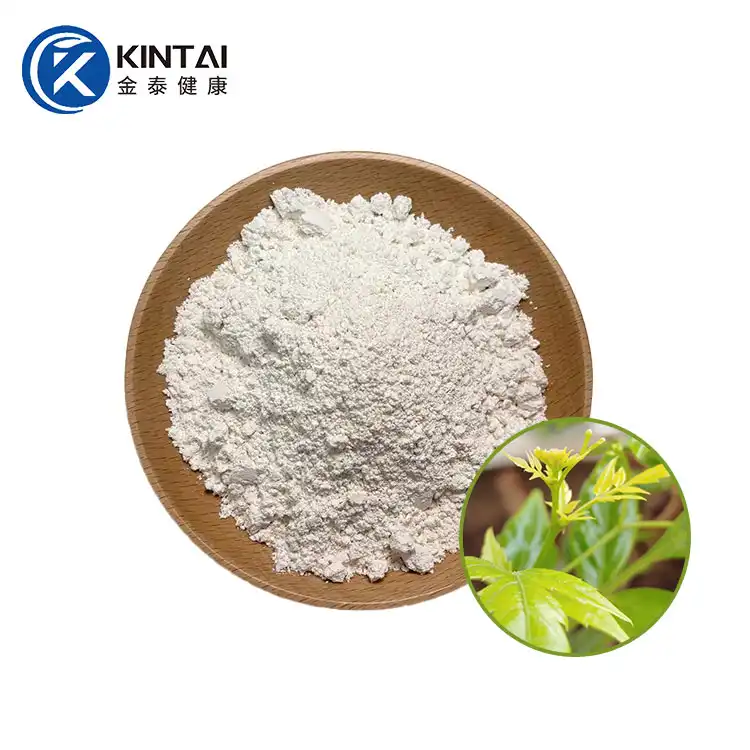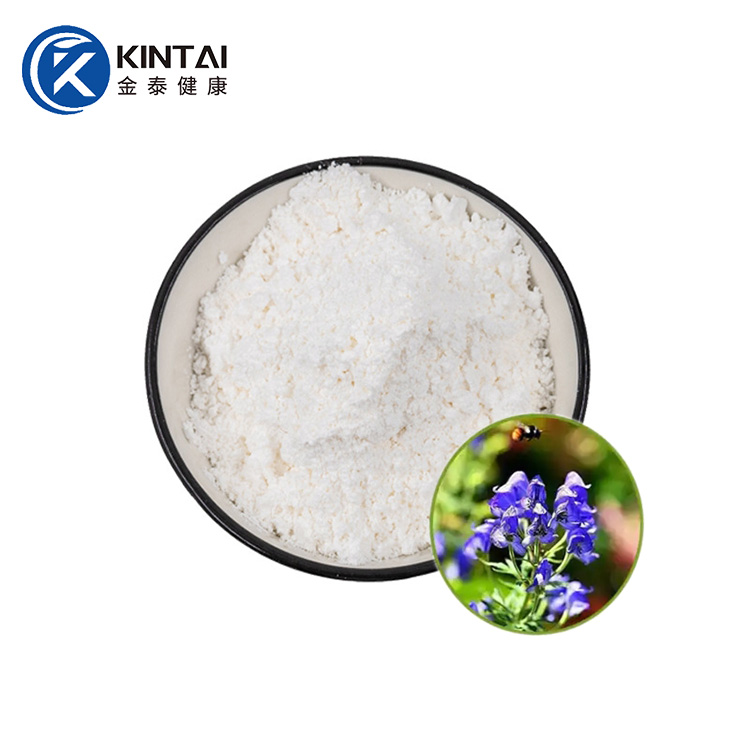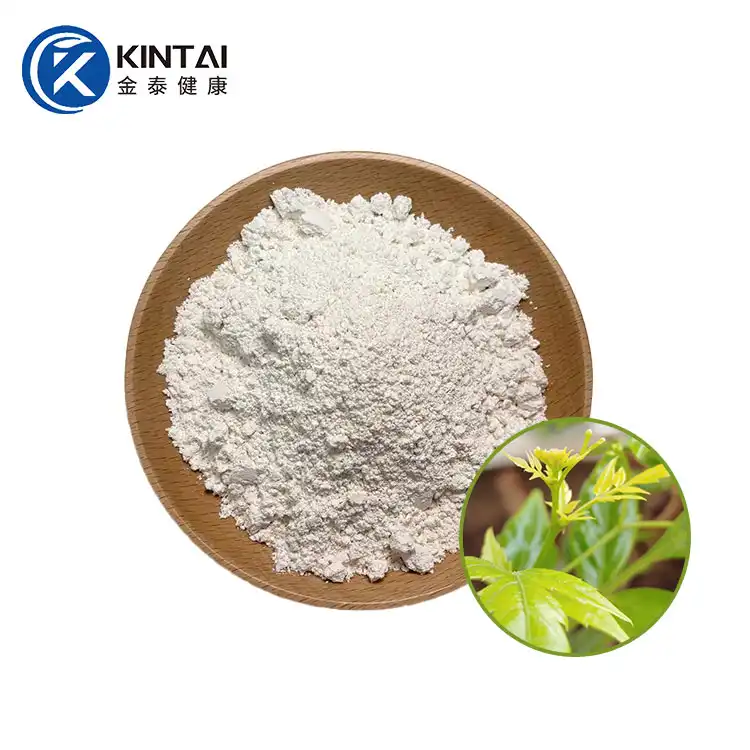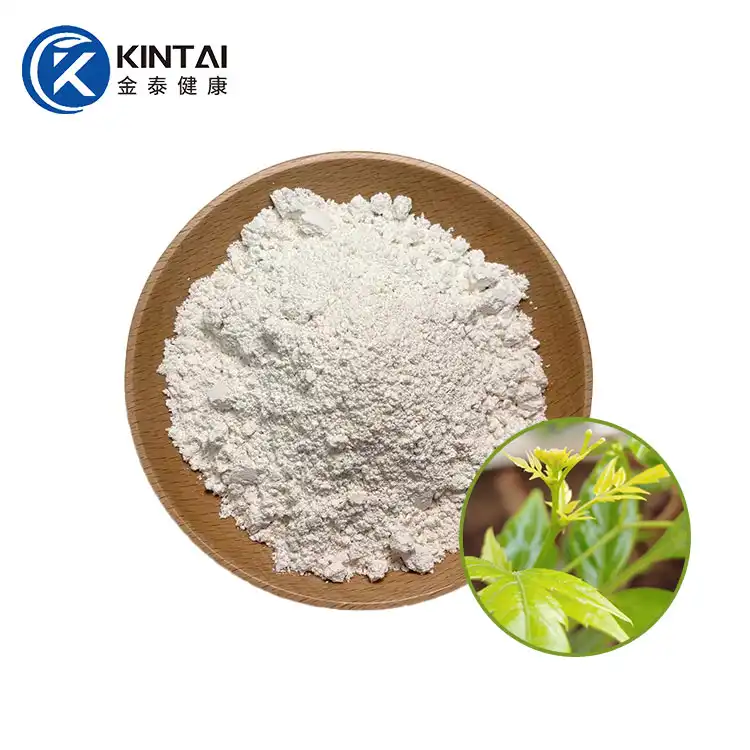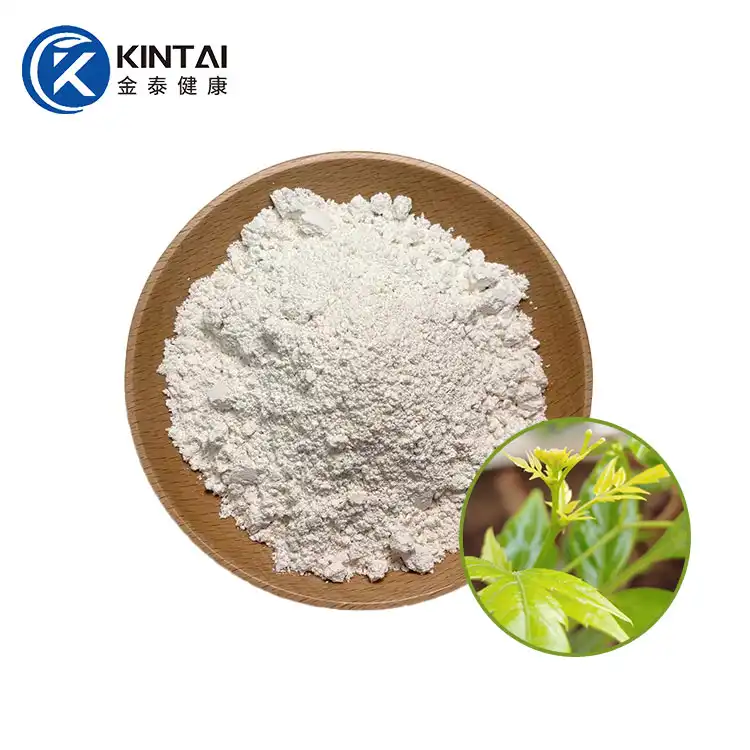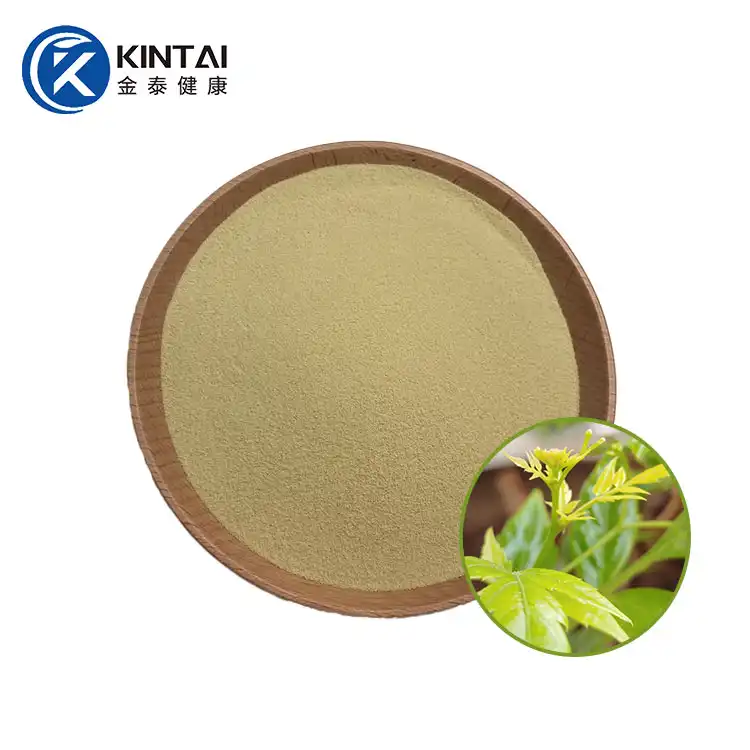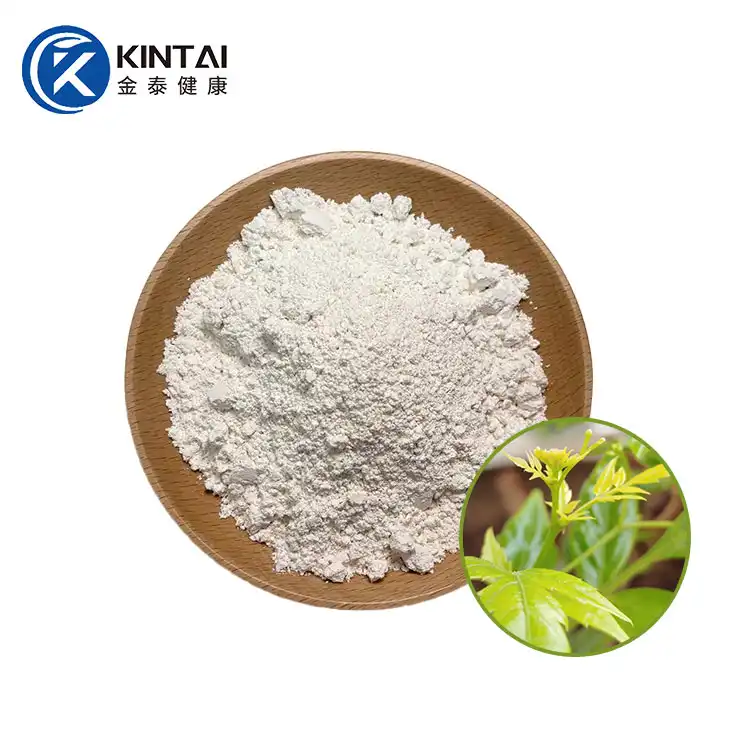Ampelopsis Grossedentata Extract
Plant Source: Vine tea
Specification: 98% DHM, 30% Water-soluble DHM powder(Other specifications can be customized)
Test Method: HPLC
CAS Registry No: 27200-12-0
Funcations: Hangover;Anti-oxidation;Liver protection
Appearance: White or light white powder
Certifications: GMP, ISO9001:2015, ISO22000:2018, HACCP, KOSHER and HALAL
MOQ: 1KG;
Sample: Free sample available
Packing:25KG/fiber drum
Delivery Time: Delivery within one day from warehouse
Shelf Life: Two years
KINTAI's Advantage: 100,000 level clean production workshop, Non-additive, Non-GMO, Non-Irradiated/treat by heat only.
- Fast Delievery
- Quality Assurance
- 24/7 Customer Service
Product Introduction
Ampelopsis Grossedentata Extract (DHM) Manufacturer
The active ingredients in Ampelopsis Grossedentata Extract(Vine tea extract/DHM/DMY) include flavonoids, polyphenols, polysaccharides and trace elements, among which flavonoids are the most important active ingredients, especially dihydromyricetin, which has the most obvious pharmacological effect.
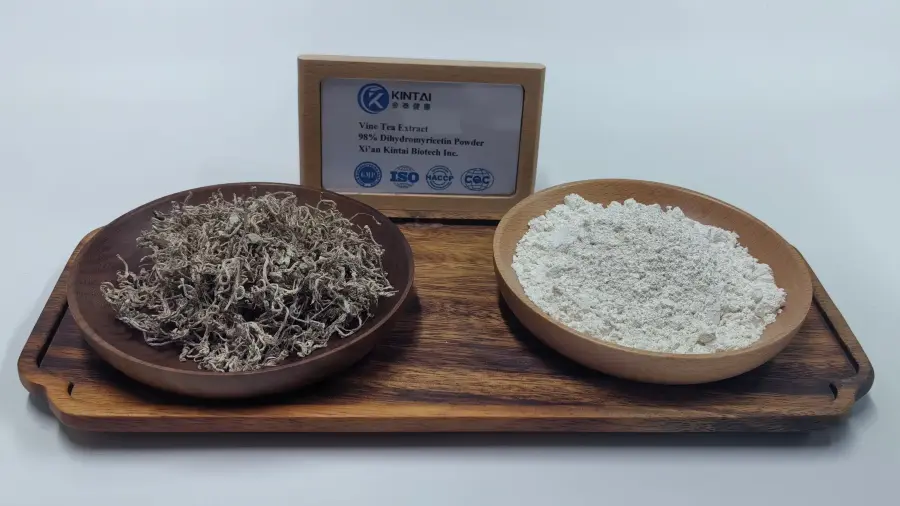
Kintai is a well-known vine tea extract factory in China. Over the years, we have focused on providing customers with high-quality Vine Tea Extract with 98%DHM and 30% water-soluable DHM. We strictly control the entire process from raw material picking to production and sales, and provide customers with first-class products and services from beginning to end. For more information about dihydromyricetin, please contact us at info@kintaibio.com.
COA of KINTAI Ampelopsis Grossedentata Extract
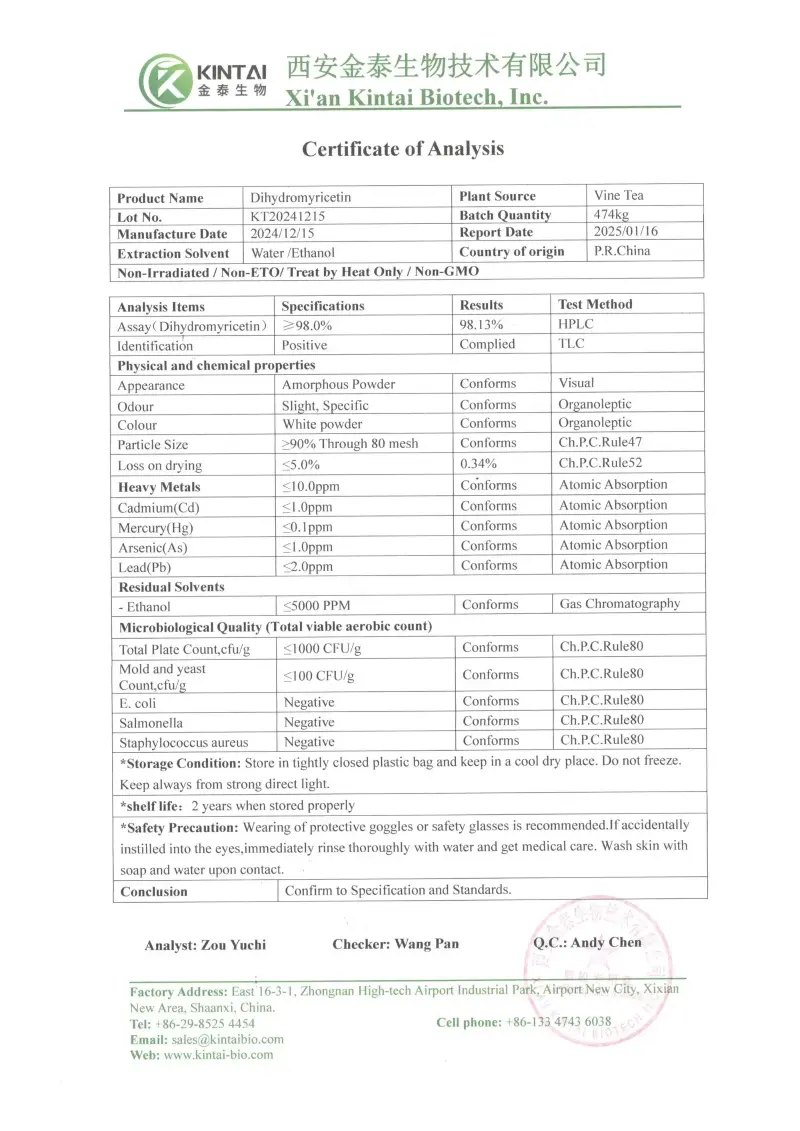
Physical&Chemical Properties of Ampelopsis grossedentata Extract
|
Property |
Description |
|
Common Name |
Vine Tea Extract/ Ampelopsis grossedentata Extract/ DHM/ DMY |
|
Botanical Source |
Ampelopsis grossedentata |
|
Physical Form |
Fine powder |
|
Color |
White to brownish-yellow powder. |
|
Odor |
Characteristic |
|
Solubility |
Water: Highly soluble (especially for powdered extracts standardized for flavonoids). |
|
Hygroscopicity |
The powdered form is typically hygroscopic (absorbs moisture from the air) and should be stored in a sealed, dry container. |
|
Stability |
Sensitive to prolonged exposure to high temperatures, oxygen, and direct light, which can degrade the active flavonoids. Stable under cool, dry, and dark conditions. |
|
Main Chemical Constituents |
Dihydromyricetin (DHM) (primary and most abundant active compound, a flavonoid). |
|
Molecular Weight (Main Active) |
320.25 g/mol (for Dihydromyricetin) |
|
Melting Point |
Approximately 195°C - 205°C (for pure Dihydromyricetin). The extract itself does not have a sharp melting point. |
|
pH (in solution) |
Aqueous solutions are generally slightly acidic. |
|
Analytical Methods |
HPLC (High-Performance Liquid Chromatography) is standard for quantifying DHM and other flavonoids. UV-Vis spectroscopy is also used for total flavonoid content. |
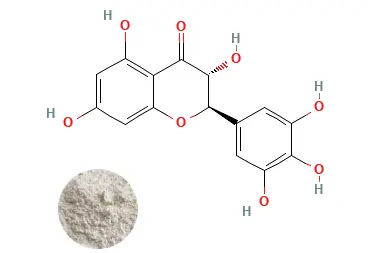
Sample available! Contact us now>>>
Ampelopsis Grossedentata Extract Dosage
|
Factor |
Dosage Range & Information |
Key Considerations |
|
Common Basis for Dosage |
Dosage is typically based on its primary active compound, Dihydromyricetin (DHM). |
Most clinical studies and supplement labels refer to the DHM content. A "standardized extract" will specify the percentage of DHM (e.g., "98% DHM"). |
|
General Health & Antioxidant Support |
150 mg to 500 mg of extract per day, often divided into 2-3 doses. |
This is a common maintenance range for general wellness. It is best to start at the lower end of this range. |
|
Acute Situations (e.g., Alcohol Metabolism) |
500 mg to 1000 mg of extract, taken before or after alcohol consumption. |
This is a higher, short-term dose often marketed for this specific purpose. Human studies are limited, and this should not be seen as an endorsement to drink excessively. |
|
Special Populations |
Pregnancy & Breastfeeding: Avoid use due to lack of safety data. |
The safety profile for these groups has not been established. Potential interactions with medications processed by the liver are theoretically possible. |
Ampelopsis Grossedentata Extract in Livestock&Poultry Production
The most abundant class of compounds in vine tea extract is flavonoids, with dihydromyricetin being the most abundant. Other flavonoids include myricetin, quercetin, and apigenin. Vine tea extract contains a variety of active ingredients, including flavonoids, phenolics, and volatile oils, exhibiting anti-inflammatory, antioxidant, and anti-pathogenic biological activities. Vine tea extract has broad development and utilization prospects and feed value.
Adding vine tea extract to the diet can promote growth and metabolism in pigs, improve blood sugar metabolism, alter the serum free amino acid profile of finishing pigs, and improve pork tenderness.
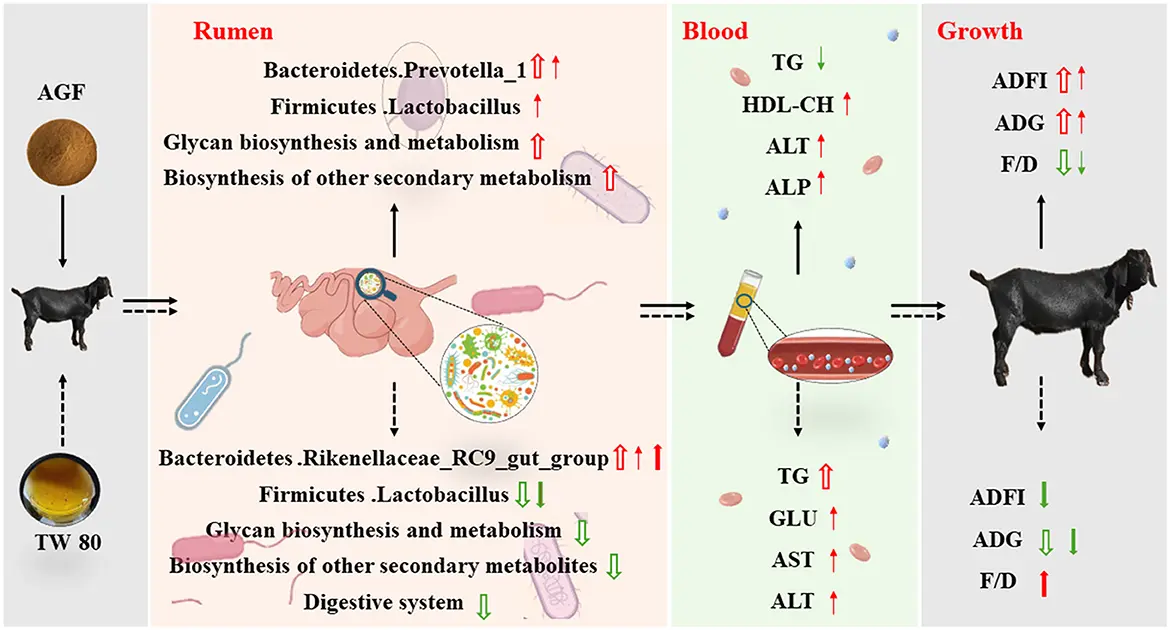
Vine tea extract can directly promote the growth of poultry, improving growth performance, slaughter performance, and meat quality. It can also enhance immune function and antioxidant capacity, inhibit pathogen invasion, and shorten the course of disease, thereby promoting healthy and environmentally friendly poultry farming.
(Reference: Biological functions of Ampelopsis Grossedentata Extract and its application in livestock and poultry production,ZHANG Lihui,MENG Yanlin,ZHU Xiaoyong, WANG Dandan)
Ampelopsis Grossedentata Extract for Hangover-relieving
Accelerate the decomposition of acetaldehyde: After alcohol enters the human body, it is first converted into acetaldehyde under the action of alcohol dehydrogenase, and then acetaldehyde is decomposed into acetic acid by acetaldehyde dehydrogenase, and finally decomposed into carbon dioxide and water and discharged from the body. Dihydromyricetin can accelerate the decomposition of acetaldehyde, a metabolite of ethanol, and quickly turn it into a non-toxic substance, thereby reducing the damage of acetaldehyde to liver cells and reducing the symptoms of drunkenness.
Protect liver function: Dihydromyricetin can improve the increase in serum lactate dehydrogenase activity caused by liver cell damage, inhibit the formation of collagen fibers in hepatic M cells, thereby playing a role in protecting the liver, enabling the liver to better perform the function of metabolizing alcohol, greatly reducing the damage of ethanol to the liver, allowing the liver to quickly recover to a normal state, and then accelerate the metabolism and excretion of alcohol.
Reduce the impact of alcohol on the brain: Dihydromyricetin can counteract the effect of GABA receptors in the brain. Even if the alcohol content in the blood is still high, it can prevent the brain from feeling the intoxicating effect, reduce the stimulation of alcohol to the brain, and thus reduce the dizziness, vertigo, unconsciousness and other symptoms after drunkenness.
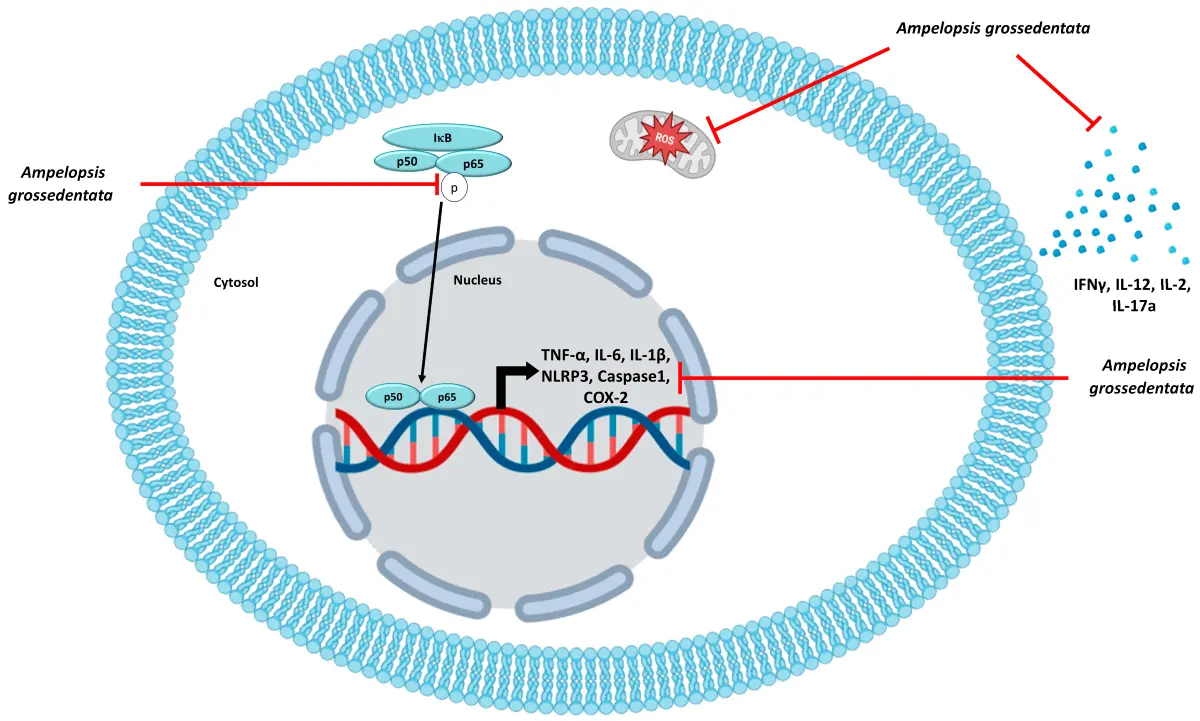
Ampelopsis Grossedentata Extract Uses
1. Medicine and Health
DHM has been extensively studied for its potential as an auxiliary protection against chemical liver damage. Its potent antioxidant capacity can help reduce liver burden. It also demonstrates positive effects in regulating blood lipids, blood sugar, and blood pressure, offering a natural solution for the prevention and management of metabolic syndrome. Its anti-inflammatory and antibacterial properties are also being used in the development of products to improve oral health and relieve throat discomfort.
2. Functional Foods and Beverages
As a natural functional factor, DMY is widely added to a variety of foods and beverages. It is used in functional teas, solid beverages, and healthy yogurts, lending health claims such as "clearing heat and reducing internal heat" and "boosting immunity." Its unique "bitterness followed by sweetness" flavor profile also enhances the taste of beverages. In particular, functional foods developed using its dihydromyricetin ingredient, known for its hangover-relief and liver-protecting properties, have become a hot topic in the market.
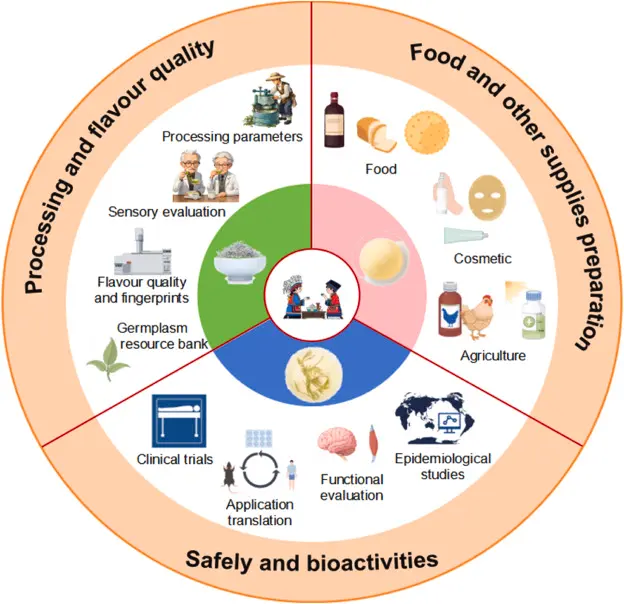
3. Daily Cosmetics and Personal Care
Thanks to its outstanding antioxidant and antibacterial properties, Ampelopsis Grossedentata Extract is highly sought after in the cosmetics sector. As a natural preservative and functional ingredient, it is added to skincare products, toothpaste, and mouthwash. In skincare products, it helps scavenge free radicals, slows down photoaging, and whitens and moisturizes the skin. In oral care products, it effectively inhibits oral bacteria, reduces inflammation, and maintains a fresh and healthy oral cavity, satisfying consumers' demand for natural and safe ingredients.
4. Agriculture and Animal Husbandry
Following the trend toward green agriculture and healthy animal husbandry, vine tea extract is being explored as a potential botanical pesticide or feed additive. Its natural antibacterial properties can be used to control certain crop diseases and reduce the use of chemical pesticides. In animal husbandry, it is added to feed to enhance animal immunity, reduce reliance on antibiotics, and potentially improve the quality of livestock and poultry products, meeting the requirements of sustainable development in modern agriculture.
FAQ
Q: Is Dihydromyricetin safe? Any side effects?
A: Generally recognized as safe (GRAS) when used as directed. No reported severe side effects, but consult a doctor if pregnant, nursing, or taking medications.
Q: Can you customize the formulation (powder/liquid/capsules)?
A: Yes! We provide OEM/ODM services, including private labeling, dosage adjustments (e.g., 30%-90% DHM), and blended formulas.
Q: Can I request samples before bulk ordering?
A: Absolutely! Contact us for free samples (you only pay shipping).
Our Certifications
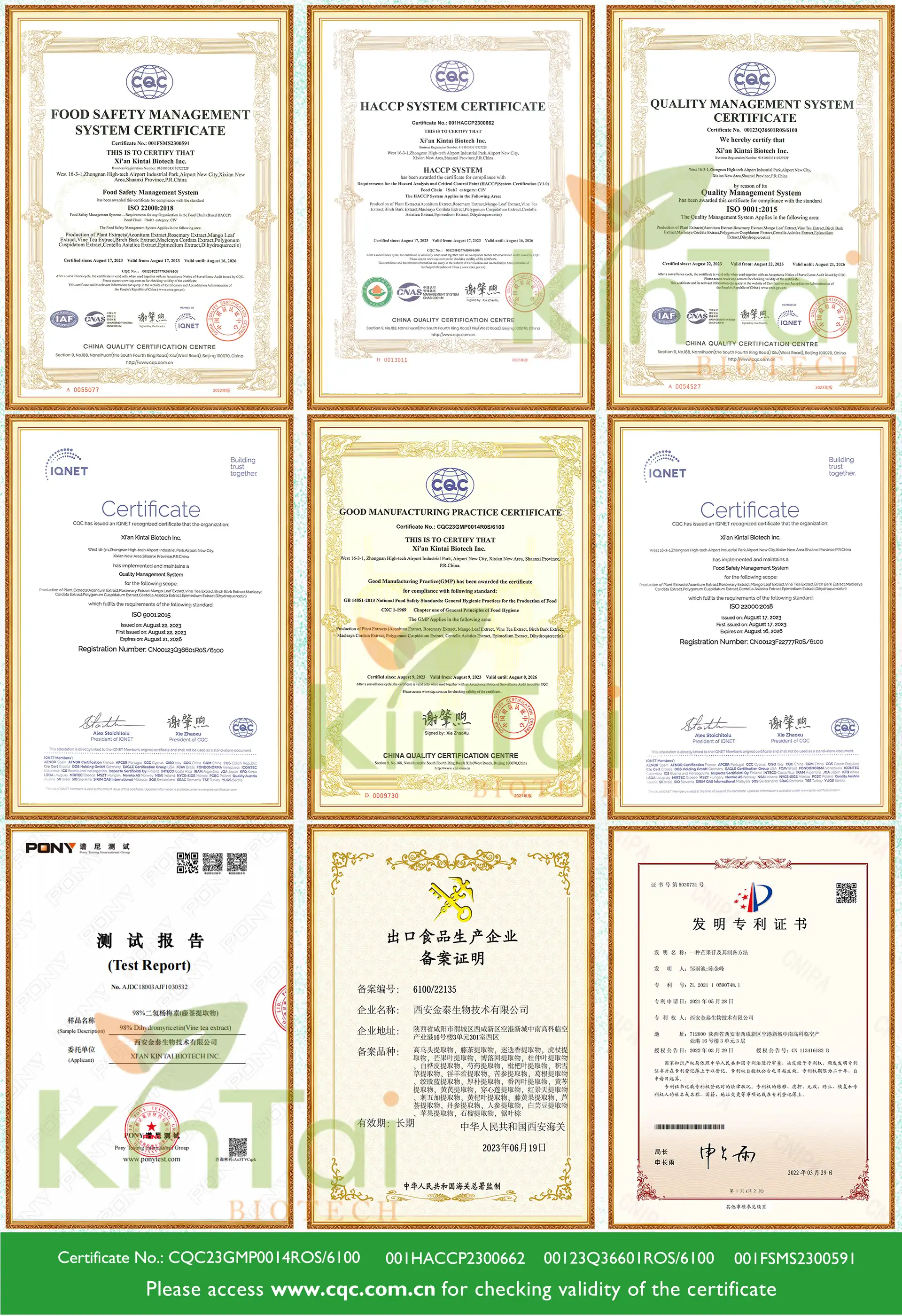
Send Inquiry

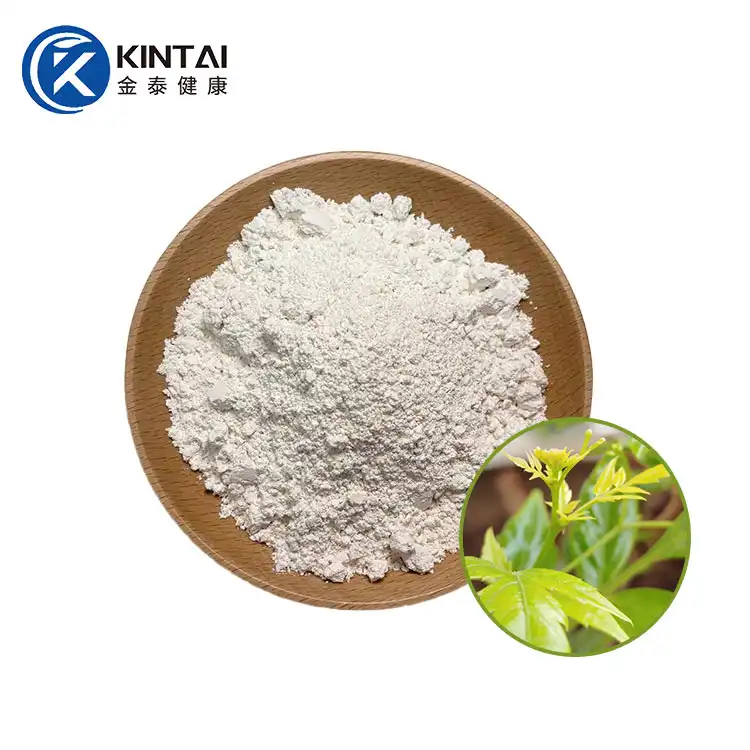
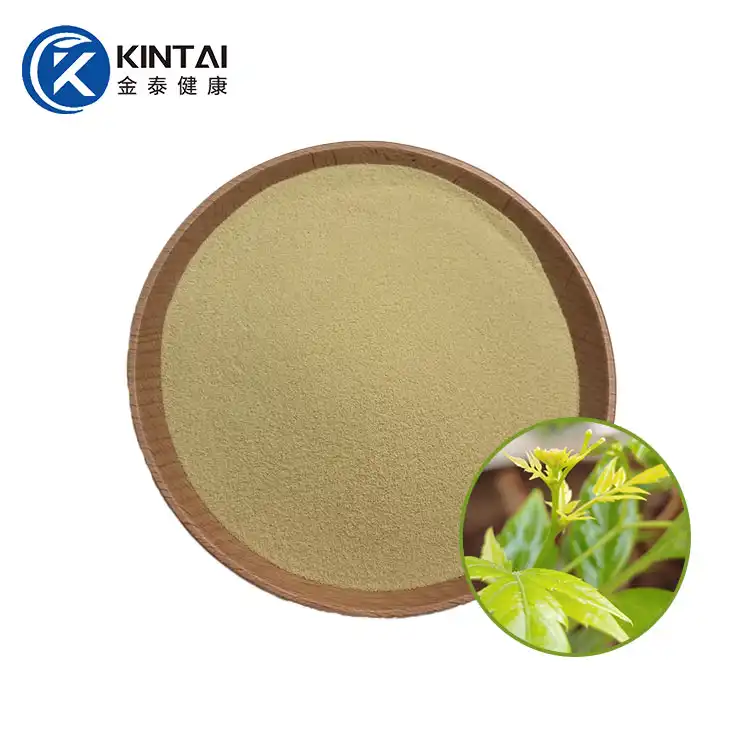
_1761012285350.jpg)
